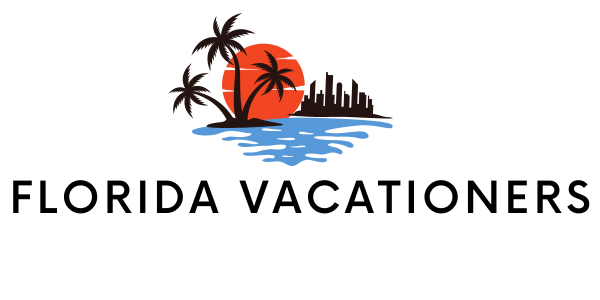Looking for a guide to sailing the Florida Keys? You have come to the right place! Here’s a full circumnavigation Route of the Florida Keys from an avid Florida sailor.
The Keys are a magical place and the only place in the continental US where you will find water that is a classic crystal clear turquoise shade. You could spend months exploring the hundreds of reefs and keys. If you don’t have months to spend exploring, I have got you covered.
I’ve compiled a cohesive itinerary for your Florida Keys circumnavigation that can be done within a week, but you’ll want to have more time. I promise. I would recommend that you set aside at least two weeks for this trip, so you can stop and explore the places that stand out to you the most.
This sailing journey through the Keys begins in the Miami/ Key Biscayne area. If you don’t have your own sailboat, you can rent one from sailo.com. For this journey, a sailboat with a shoal keel or a catamaran would be the best fit, as the Florida Keys are surrounded by relatively shallow waters.
The sailboat / yacht rentals out of the Miami/ Key Biscayne area are currently ranging from $450-$2000+ a day. I would recommend doing as much provisioning as possible while in this area, as you will have a wider variety of options and a better deal on gas and diesel.
After you get your boat stocked up and ready for your trip, you can anchor or moor off of Dinner Key for the night before starting your journey.
Florida Keys Sailing Guide: A 2 week itinerary
1. Sailing from Dinner Key to Rodriguez Key
49 Nautical Miles // 8 hours of sailing
If you decide to spend the first night of your journey at Dinner Key, the city has moorings available for $29.16 a night for vessels under 40 feet.
If you opt to spend the money for the mooring ball, you will also have access to pump-out facilities, laundry, exceptionally clean bathrooms and showers, and a dinghy dock (although it is quite a distance from the mooring field). There is also a shuttle service that runs to the mooring field from 8 am-5 pm; however, it doesn’t run if there are high winds and can result in having you stuck on shore without a ride back to your home.
This spot off Dinner Key offers very little protection and is open to all directions except the east.
Once you have weighed anchor and are ready to start heading to your next destination, head southwest towards the Biscayne flats, south of Key Biscayne.
If you want to stop for the night or need to duck away from an oncoming storm, you can anchor in No Name Harbor or along the edges of the Cape Florida Channel. After passing through the Biscayne flats, keep heading east towards the Atlantic Ocean. Once you’ve bypassed all of the channel markers, turn south and start heading through the waters of the Biscayne National Park.
Keep heading south down Hawk Channel, you will soon come to an area known as Mosquito Bank. Once you are sailing through the Mosquito Bank, you will see Rodriguez Key to your southwest. There are crab pots virtually everywhere, even within the channel. Be sure to be on the lookout, if you plan on getting in after dark it is crucial that you have a reliable bright spotlight.
I recommend anchoring on the northwest side of the island, in order to get the most protection possible. You might have a little bit of trouble trying to get your anchor to set, as the bottom consists of seagrass, rock, and coral.
Keep in mind that it is illegal to anchor on coral, so be sure to find a patch of sand or seagrass to drop the hook in. For southbound travelers, this is their first taste of the crystal clear water that the Keys are known for.
On days with better visibility, you can sometimes see your anchor in 7-10 feet of water. After getting your anchor set, be sure to go to shore and do some exploring on this beautiful, untouched mangrove island.
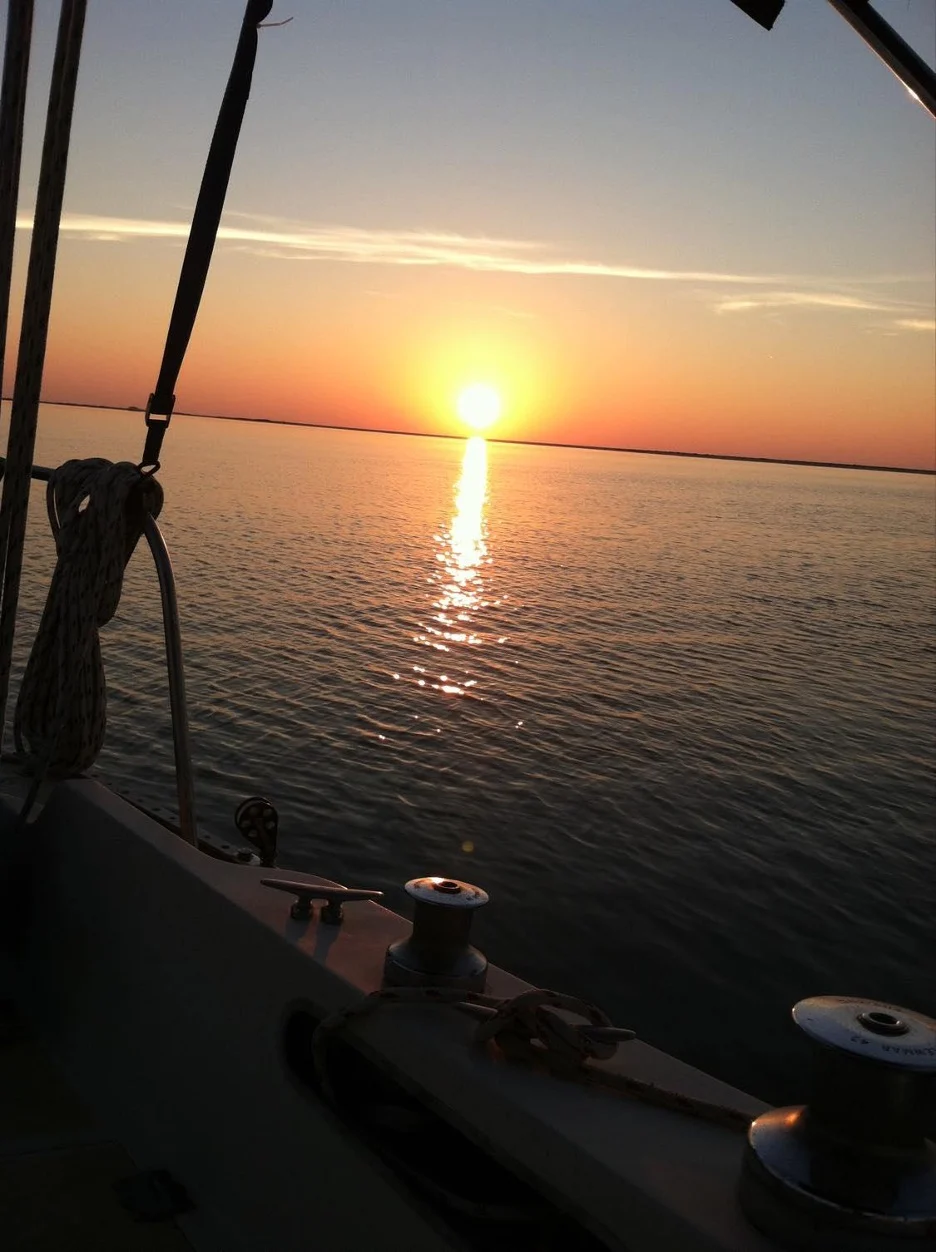
2. Sailing from Rodriguez Key to Little Crawl Key
37.9 Nautical Miles // 6 hours of sailing
Be cautious of crab pots along this route as they are littered everywhere. You should have no issues as you’re heading south down Hawk Channel, it is a relatively well-marked channel.
Once the channel starts bearing more west, you will find yourself coming up to the south side of Tavernier Key. You can also stop here and anchor for the night on both the north and south sides of the island and it has a decent sandy bottom that provides good holding. Little Crawl Key is home to Curry Hammock State Park.
Curry Hammock State Park is the largest piece of untouched land between Key Largo and Big Pine Key. If you visit during the fall you may be lucky enough to witness the huge migration of peregrine hawks that stop on the island on their pilgrimage south. Little Crawl Key is just south of Crawl Key.
They’ve been given their names due to the large number of turtle nesting that occurs on the island, with tons of tiny hatchlings crawling to the sea every year.
There are mangrove paddling trails that you can traverse on a kayak, dinghy, or paddleboard to get an up-close and personal view of the mangroves and all of the life inside of them. There are also hiking and biking trails on land if you would like to spend some time with solid ground under your feet.
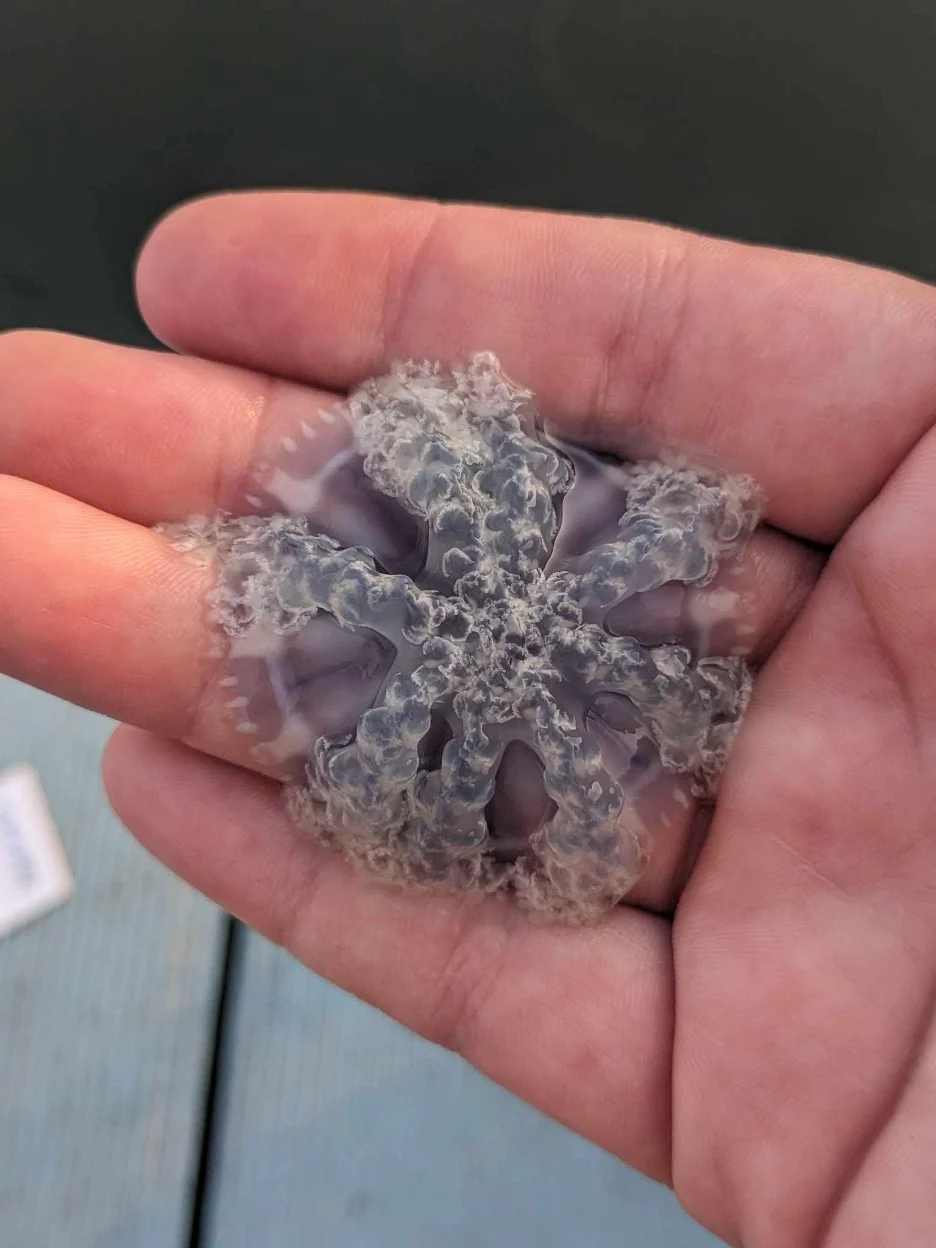
3. Cruising from Little Crawl Key to Newfound Harbor Key
28.8 Nautical Miles // 4.5 Hours of Sailing
Before heading west out of Hawk Channel, be sure to stop at Looe Key Reef to do some amazing snorkeling and diving. There are tons of mooring balls surrounding the island on a first come first serve basis, be sure not to drop the hook on any reef or coral, as it is illegal.
If the mooring balls are all taken and you must anchor, be sure to find a nice patch of sand to drop the hook in. You will find some of the best snorkeling and diving in the Florida Keys at the reef off Looe Key. While swimming around the reef you may come across some goliath groupers, spotted eagle rays, barracudas, or even a black-tip reef shark.
If you have extremely placid weather, you may be able to spend the whole night at Looe Key Reef. However, if you have any type of wind or swell, I would recommend heading a bit further inland for the night. Leaving the reef, head west-northwest towards Big Pine Key.
There is a slightly shallow area just north of Munison Key where you should keep an eye on your depth finder. You will find a ½ square mile of reef just off the coast of Palm Island that hosts an amazing diversity of coral, including fan coral, brain coral, boulder coral, and star coral.
Diving, while there is a northwest wind blowing, will provide you with the best conditions for good visibility.
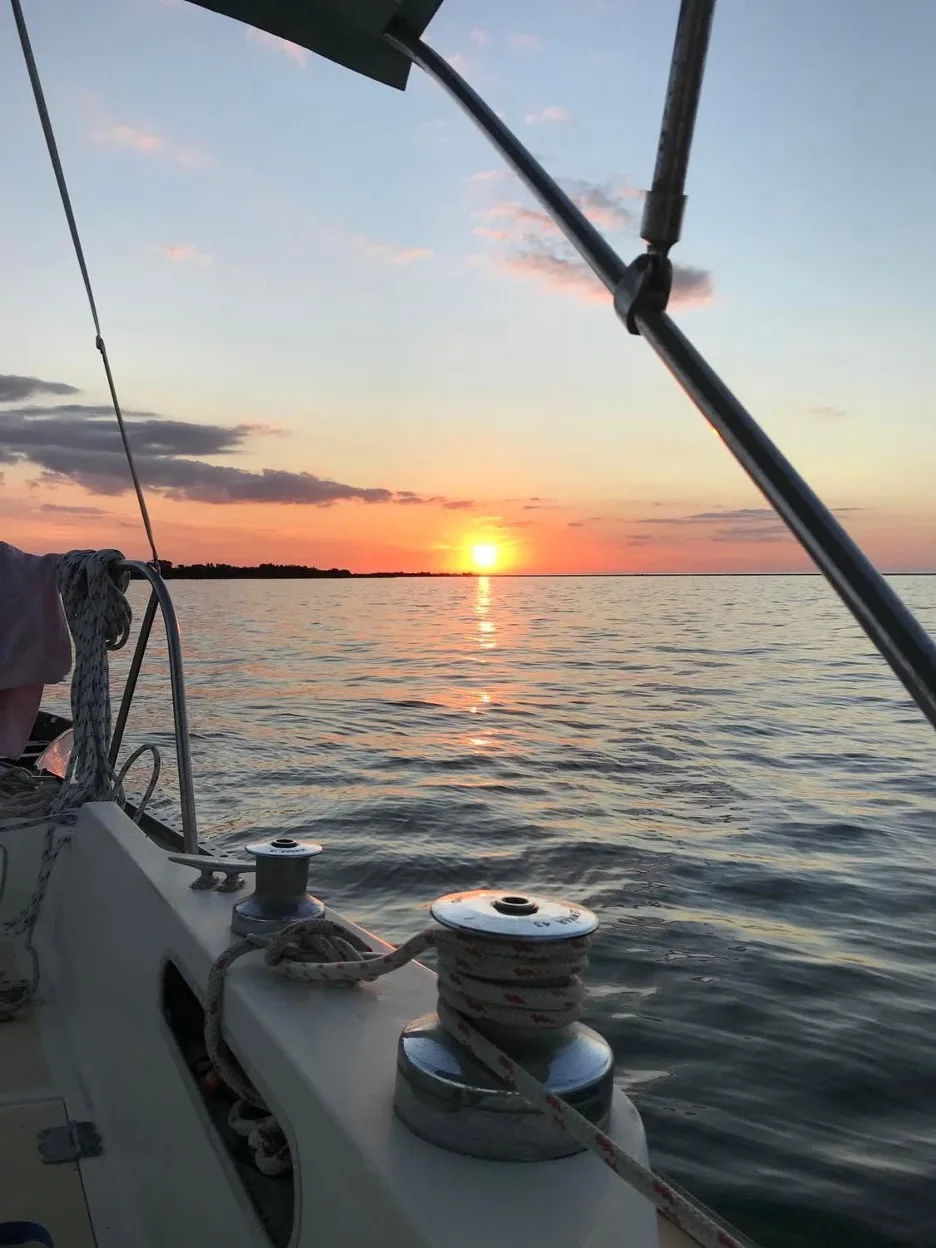
4. Cruising from Looe Key to Key West
25.3 Nautical Miles // 4 Hours of Sailing
As you are approaching Key West; your senses may start to overwhelm you. It is one of the best places to go sailing in the Florida Keys.
You will be able to hear the music and people laughing from the downtown area, smell the burgers cooking on the grill, smell the deckhands cleaning fish on the docks while joking with their crewmates, and hear an almost constant buzzing of motors and jetskis all around the island.
You can anchor in the northwest inlet of Fleming Key, and dinghy into downtown from there. You will still have a little bit of traffic buzzing around you, which is virtually impossible to avoid in such close proximity to Key West. You can also anchor on the Northeast side of Wisteria Island, which is a good option as well.
However, a few people have reported that there is a sizable amount of derelict boats off of Wisteria Island that tend to drag if there is any weather at all. It is also a considerable distance from the dinghy docks on Key West. If you decide to leave your tender at the dinghy dock, it costs $8 a day. I would still recommend locking up your belongings to make sure that everything is where you left it when you return.
Once you get onshore in Key West, the activities available are essentially endless. There is something to do for the whole family. If you are a literary lover, you can stop at the Hemingway Home and Museum and meet the six-toed cats that live on the grounds.
You can also get a tour and see where Hemingway spent his nights writing his multiple masterpieces. The pool on the premises was constructed in 1938, and is gargantuan in size, especially for this era. It was the only pool within 500 miles of Key West when it was constructed. Entrance to the Hemingway Home costs $18/day for adults, $7 for children between 6-12 years old, or free for children 5 and under. Entrance into the home also gives you access to a 20-30 minute guided tour.
If you would like to get a little more in-depth view of the life of Ernest Hemingway, you can grab dinner and a drink at Sloppy Joe’s Bar, one of Hemingway’s favorite hang-outs.
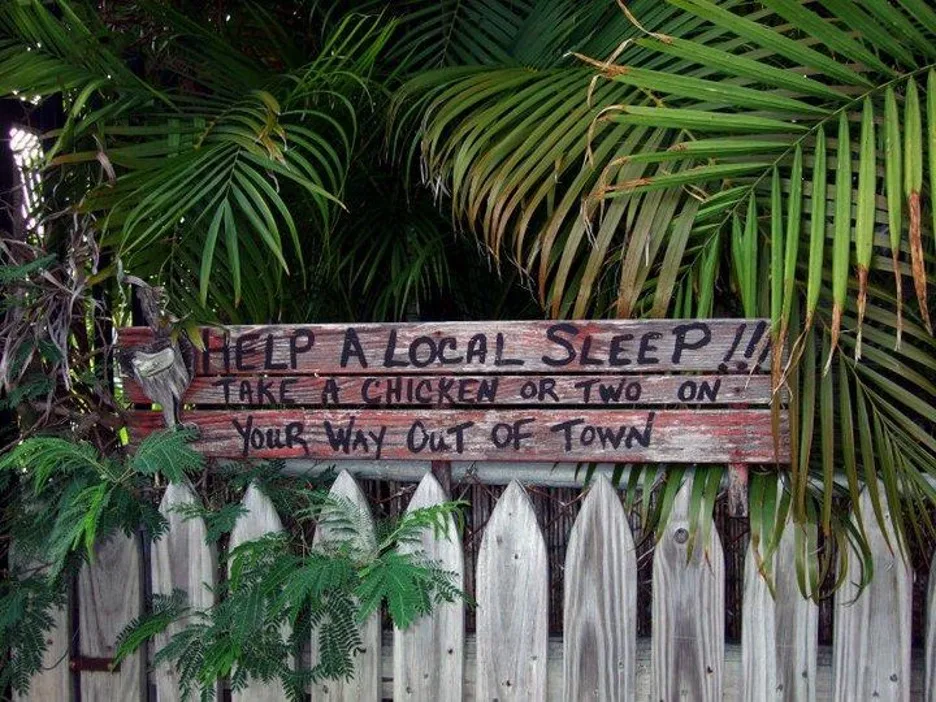
If you would like to see a more colorful side of Key West, you can visit Nancy Forrester’s Secret Garden. Nancy Forrester’s Secret Garden is a parrot sanctuary that homes multiple endangered species of macaws and parrots.
Entrance to the sanctuary costs $10 for adults and $5 for children between the ages of 5 and 11 years old.
A visit to Key West is not complete until you’ve got a photo taken in front of the Southernmost Point in the Continental US, a classic must-see stop that is free to visit. From this point, it is only 90 miles to Cuba.
Duval Street runs right through the middle of Key West, oriented to run north and south. There are tons of little shops and cafes to stop and poke in and grab refreshments when necessary. If you find yourself on the north side of Duval Street, you will come across Mallory Square.
Mallory Square is known for its magnificent view of the sunset, and the countless buskers and street performers earning their living everywhere that you look. If you have a hankering for something sweet, be sure to stop at Kermit’s Key West Key Lime Shoppe for a frozen dark chocolate-covered piece of Key Lime Pie.
If you want to be blown away by the impressive size of the marine wildlife that Key West has to offer, take a trip over to Stock Island and visit Robbie’s of Key West Marina. There is a $2.50 entrance fee to go out on the dock and $4 more for a bucket full of fish to feed the tarpon. You will be able to see your hand and wrist get completely swallowed by a tarpon before it takes its treats and releases your appendages.
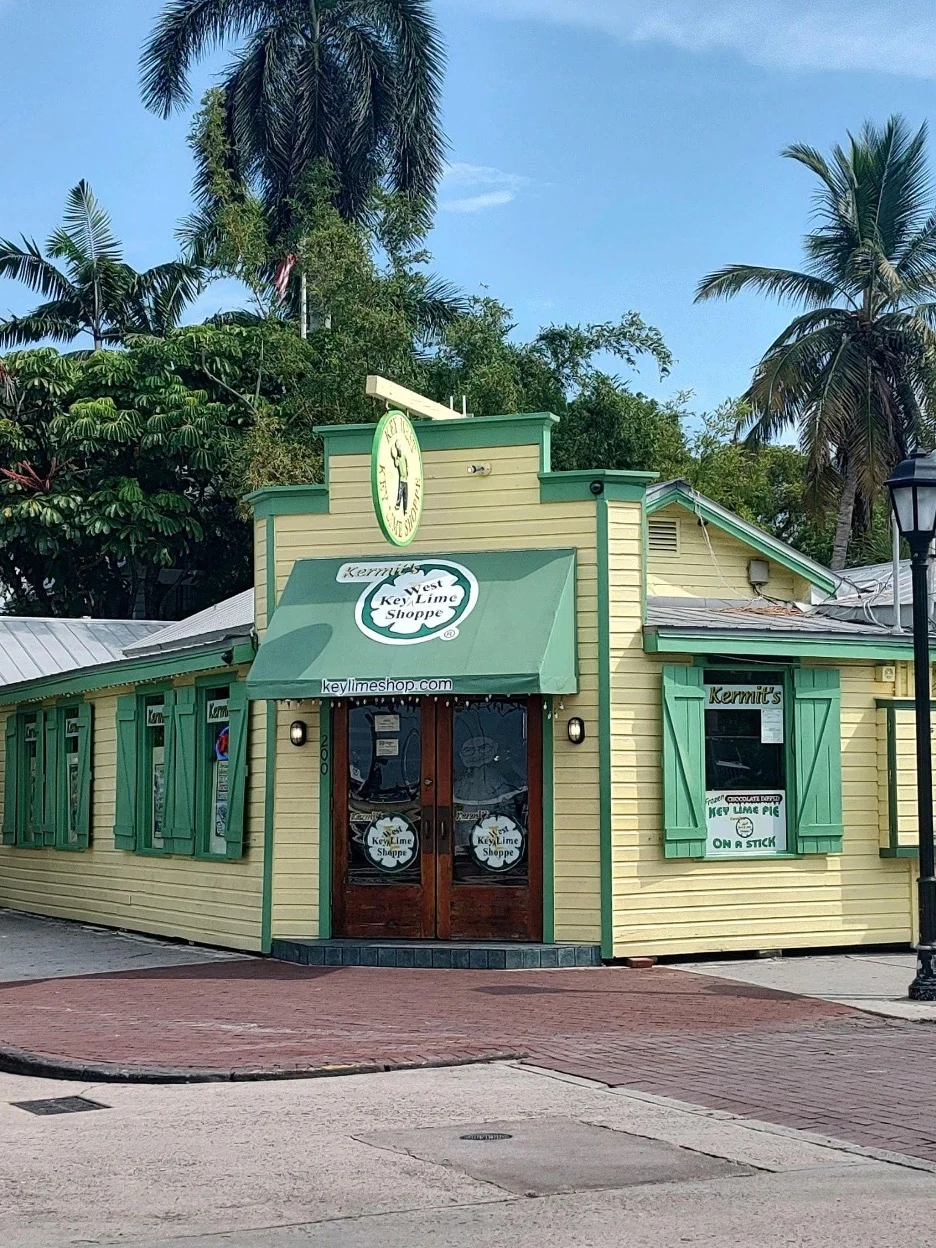
5. Key West to Dry Tortugas
64 Nautical Miles // 10 Hours of Sailing
Dry Tortugas National Park is a 100-square-mile park. It is a bird watcher’s paradise. It is one of the only places in the continental US where you can find endangered sooty terns nesting.
It is also home to one of the only known nesting colonies of frigate birds. There have been over 300 species of birds identified within its grounds. Fort Jefferson, an octagonal fort, proudly dominates Garden Key. The construction for it began in 1845. It was meant to be a military installment for US ships to patrol the Gulf of Mexico Construction was never completed and the fort was never armed, but it still sits on Garden Key, the second largest key in all of the Dry Tortugas.
Garden Key is also home to the visitors center, parks headquarters, and campgrounds. Entrance to the park costs $15 a person, excluding people under the age of 16, and is paid through a self-service fee area on the main dock at Garden Key.
here are no trash receptacles on the island so you need to “pack in and pack out” everything that you bring. Be sure to respect your neighbors and mother nature, and remember that littering is illegal. There are also no lifeguards on duty so swimming is at your own risk. It is encouraged to always use the buddy system while swimming or snorkeling
Keep in mind that it is illegal to molest, stand or sit on coral, as it does a considerable amount of damage to the ecosystem.
Anchoring on the southeast side of Fort Jefferson typically allows you the best protection. Once you get the hook set, you will find yourself in a remote tropical paradise. The Dry Tortugas National Park is only accessible by seaplane, ferry, or private boat.
The Dry Tortugas has some of the best fishing that you will ever have the pleasure of experiencing. People with their own boats are required to get a boating permit for each vessel in order to be allowed to fish. These permits are free and can be picked up at the Garden Key Dock House.
You will need to get a boating permit for any type of vessel including kayaks, paddle boards, or dinghies. You will also need your Florida saltwater fishing license. Lobstering and spearfishing are both prohibited within the park. “J” hooks are not permitted to be used within the park, but “circle” hooks are acceptable.
If you’re lucky, you’ll be able to catch some of the amazing gamefish that call the Dry Tortugas their home such as amberjacks, bluefin tunas, blackfin tunas, wahoos, kingfish, black grouper, red grouper, swordfish, sailfish, and permits. The species of fish that you pull up will be dependent on the time of year that you go.
There are also at least five turtle species present in the park including Loggerheads, Green Turtles, Kemp’s Ridley, Hawksbill, and Leatherbacks. President Franklin D. Roosevelt designated the fort a national monument. Now, you cannot remove any seashells, sand, rocks, coral, or glass from the national park.
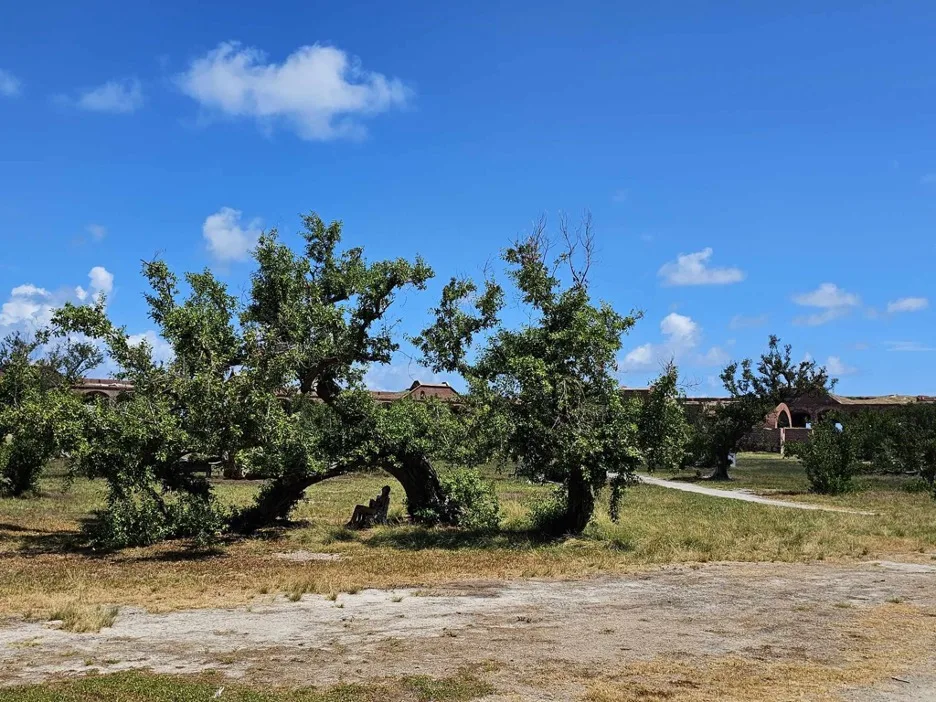
If you don’t feel up to making the entire 64-mile trip, you can stop about halfway in between Key West and the Dry Tortugas at the Marquesas Keys, turning the voyage into a slightly more manageable two-day trip.
The Marquesas Keys, not to be confused with the Marquesas Islands found in French Polynesia, are located about twenty miles west of Key West. It is sometimes referred to as “Button Island” due to its round shape. It was known to have been used for military target practice as recently as the 1980s.
The Marquesas are four miles in diameter, and the lagoon located in the center is known as Mooney Harbor. After leaving Marquesas Keys, it is a 36-mile distance to the Dry Tortugas.
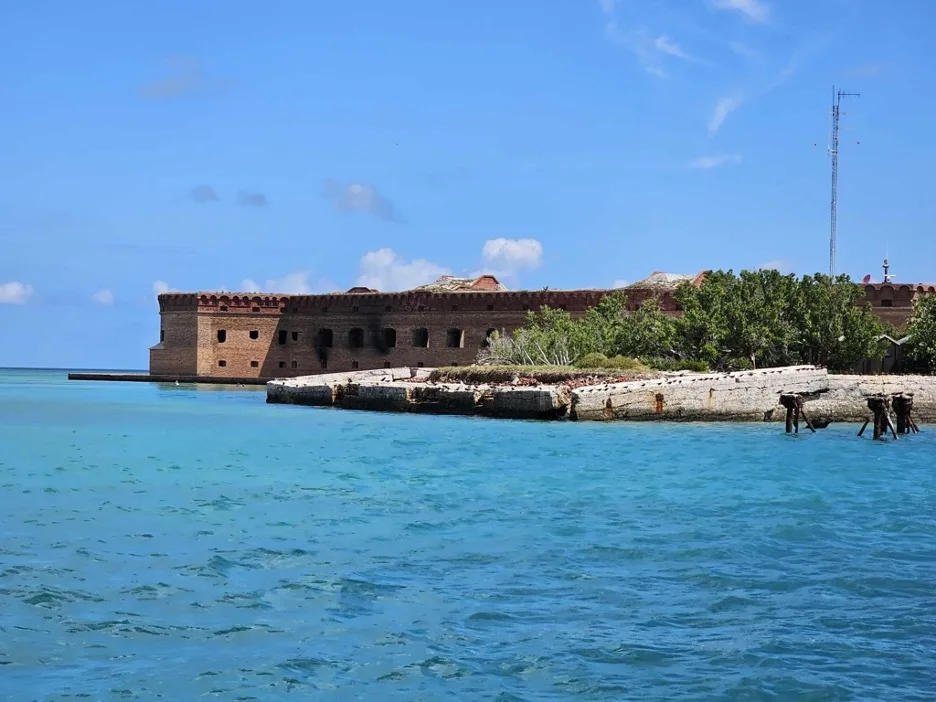
The next section of this sailing route through the Keys is through the Inner Passage, on the northwest side of the Keys in the Florida Bay, rather than the Atlantic Ocean side.
his region in the Florida Keys is rather shallow, and I wouldn’t recommend attempting the journey without a functioning transducer on board. Also, if your boat draws more than five feet, you may want to reconsider and complete the trip through Hawk Channel, on the Atlantic Ocean side.
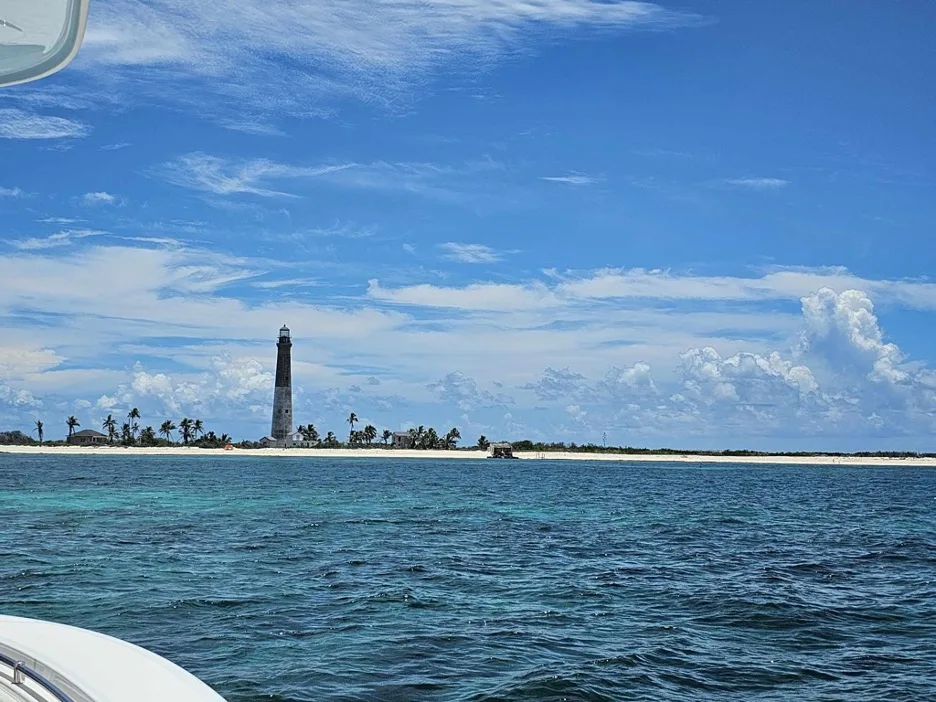
6. Dry Tortugas to Snipe Point
64.2 Nautical Miles // 10 Hours of Sailing
After visiting Key West and the Dry Tortugas, you may want to get away from the tourists a bit and hang out where the locals like to hang out. I would recommend going to Snipe Point on a weekday because the sandbar can become one giant party on the weekend.
Snipe Point is within the Great White Heron National Wildlife Refuge, which was established in 1938 as a refuge for migratory birds, great white herons, and other tropical wildlife.
This area is commonly referred to as “the backcountry” by locals. Tons of turtles use this beach as a nesting area, so be sure to keep a lookout for nesting spots, and keep your lights to a minimum at night. Great White Heron National Wildlife Reserve consists of 1,000’s acres of untouched shallow, crystal clear waters and mangrove islands.
There are no pets permitted on shore. Be sure to keep your eye out for crab pots as they are littered everywhere around the island and channel.
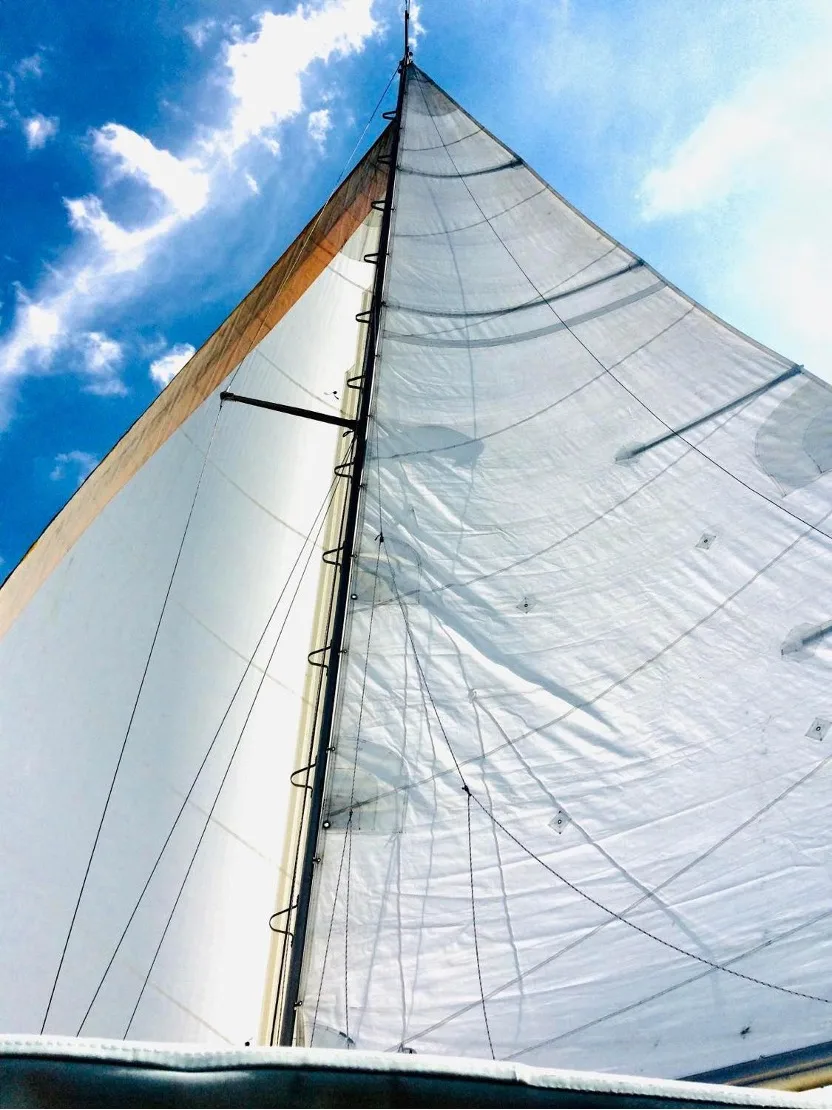
7. Snipe Point to Fat Deer Key
41 Nautical Miles // 6.5 Hours of Sailing
Fat Deer Key is located just north of Marathon and south of Long Point Key. It is another of our favorite places for Sailing in the Florida Keys. On the Atlantic side of the island, you will find Coco Plum Beach, with its pristine white powdery sand. This is a great place to hang out if you wish to spend the day cooling down a little bit.
Curry Hammock State Park is located on Fat Deer Key, and within this park you will find the Curry Hammock State Park Nature Trail. Once entering the park, travel west for one mile to find the mouth of the hiking trail. You can find parking on either side of the road.
The hammock that shadows over you gives you a little bit of relief from the hot Florida sun. This state park is home to the largest thicket of Florida thatch palms in the continental US.
Fat Deer Key is just north of Marathon. Marathon is a well established city, and you will find everything you need to reprovision and top off your gas and/or diesel tanks.
Once on shore, there are a multitude of marina and dive shops that you can check out. Some of them include: Captain Hooks Marina and Dive Center and Driftwood Marina and Storage. If you are hungry for some delicious, fresh seafood be sure to stop in at SS Wreck and Galley Grill or the Island Fish Company. You can also check out Florida Keys Aquarium Encounters while exploring Marathon.
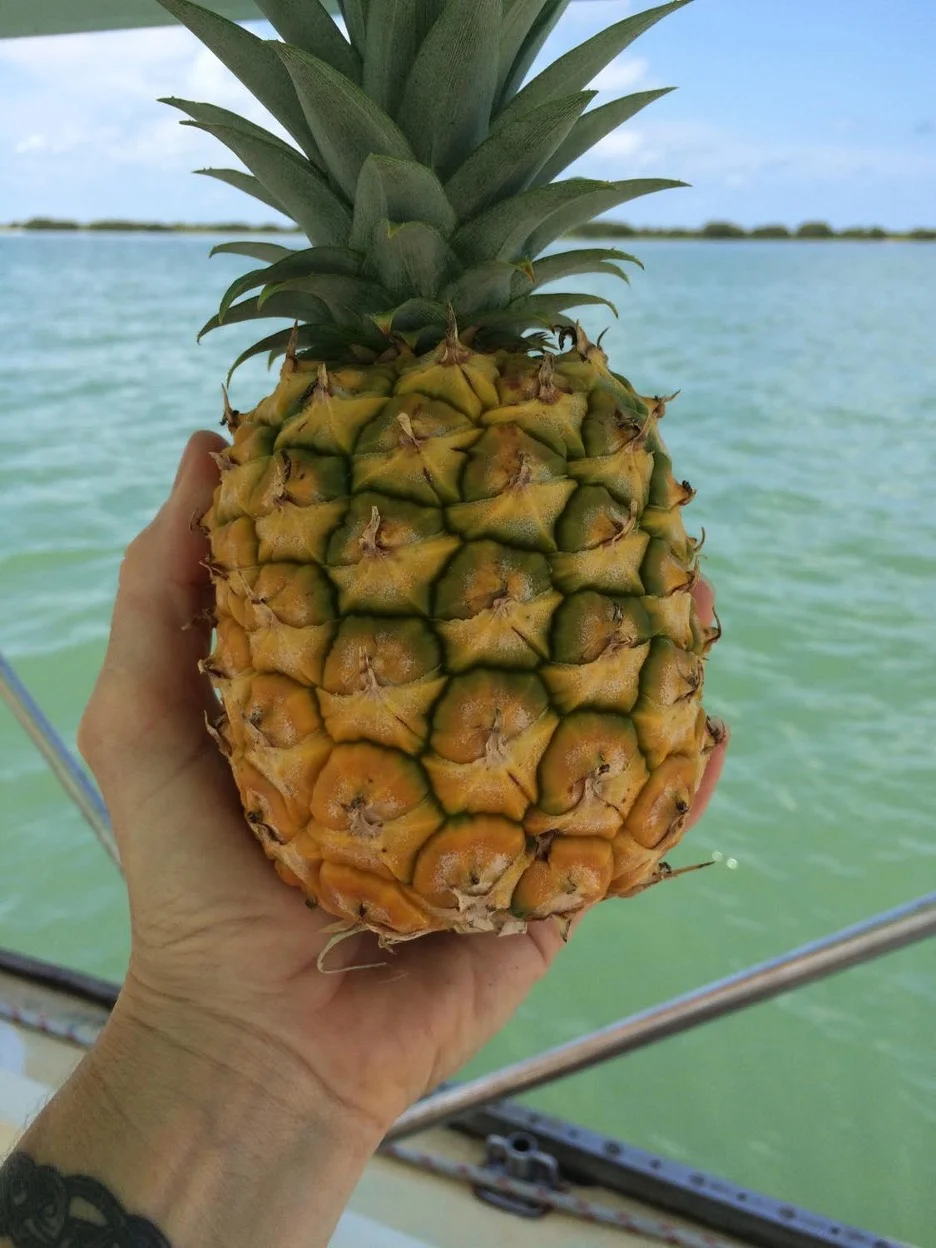
8. Fat Deer Key to Butternut Key
45.5 Nautical Miles // 7 Hours of Sailing the Keys
Butternut Key is located in Florida Bay, the body of water between the Florida Keys and the southern tip of Florida, east of the Gulf of Mexico.
Butternut Key is off the southwest coast of Key Largo. Technically, it is considered to be a part of the Everglades National Park. The maximum stay that is permitted is 14 days. There is a poll and troll zone within 300 feet of the islands, meaning that motors are not permitted.
It is easiest to approach the island from the southwest, off of the Intracoastal Waterway. You will have a 6-7 foot depth at low tide. Just like every other anchorage on the west side of the Keys, be sure to keep an eye on your depth sounder. The bottom is fine sand and soft mud and provides excellent holding. The anchorage is the most comfortable if it is blowing out of the North or East.
You’ll have a fantastic view of the sunset, as this spot is completely open to the West. This untouched, serene, remote tropical paradise inspires everyone who has the pleasure of laying eyes on it, including legendary artist Clyde Butcher. He traveled to Butternut Key in 1997 to preserve her beauty in a photograph forever.
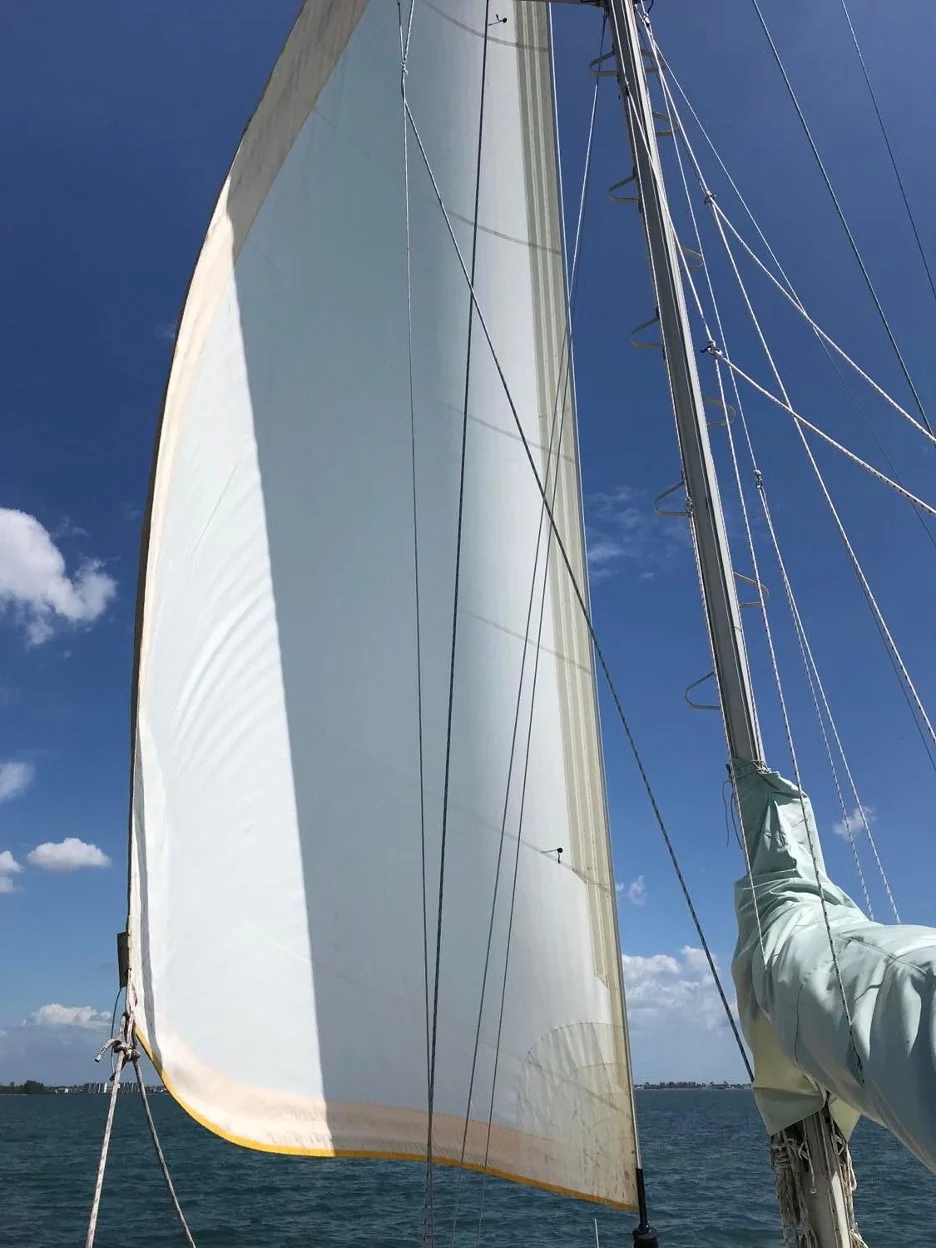
9. Butternut Key to Dinner Key
49 Nautical Miles // 7 Hours and 45 Minutes of Sailing
When you depart from Butternut Key, head southeast toward the Atlantic Ocean, and then start heading up north once you reach Key Largo. Heading west you are first going to sail north through Baker’s Cut and enter into Buttonwood Sound.
Keep heading northeast through Buttonwood Sound, until you reach Grouper Creek. Again, keep your eyes on your depth sounder to make sure you don’t run aground. Also, keep a diligent eye out for crab pots that cover the waterways through here. After passing through Grouper Creek, you will spit out to the east into Tarpon Basin. As you continue heading north up the Intracoastal Waterway, you will soon enter Dusenbury Creek.
For this portion of the sailing route, it is crucial that you have a functioning engine onboard, as these voyages are nearly impossible without one. After exiting Dusenbury Creek, you will find yourself in a large bay, known as Blackwater Sound.
Continue heading northeast until you come to the mouth of Jewfish Creek. Jewfish Creek will bring you to Barnes Sound, then Card Sound, and then finally Biscayne Bay, inside of the Biscayne National Park. You will be able to anchor back at Dinner Key or find a slip in a marina to treat yourself after your jam-packed voyage.
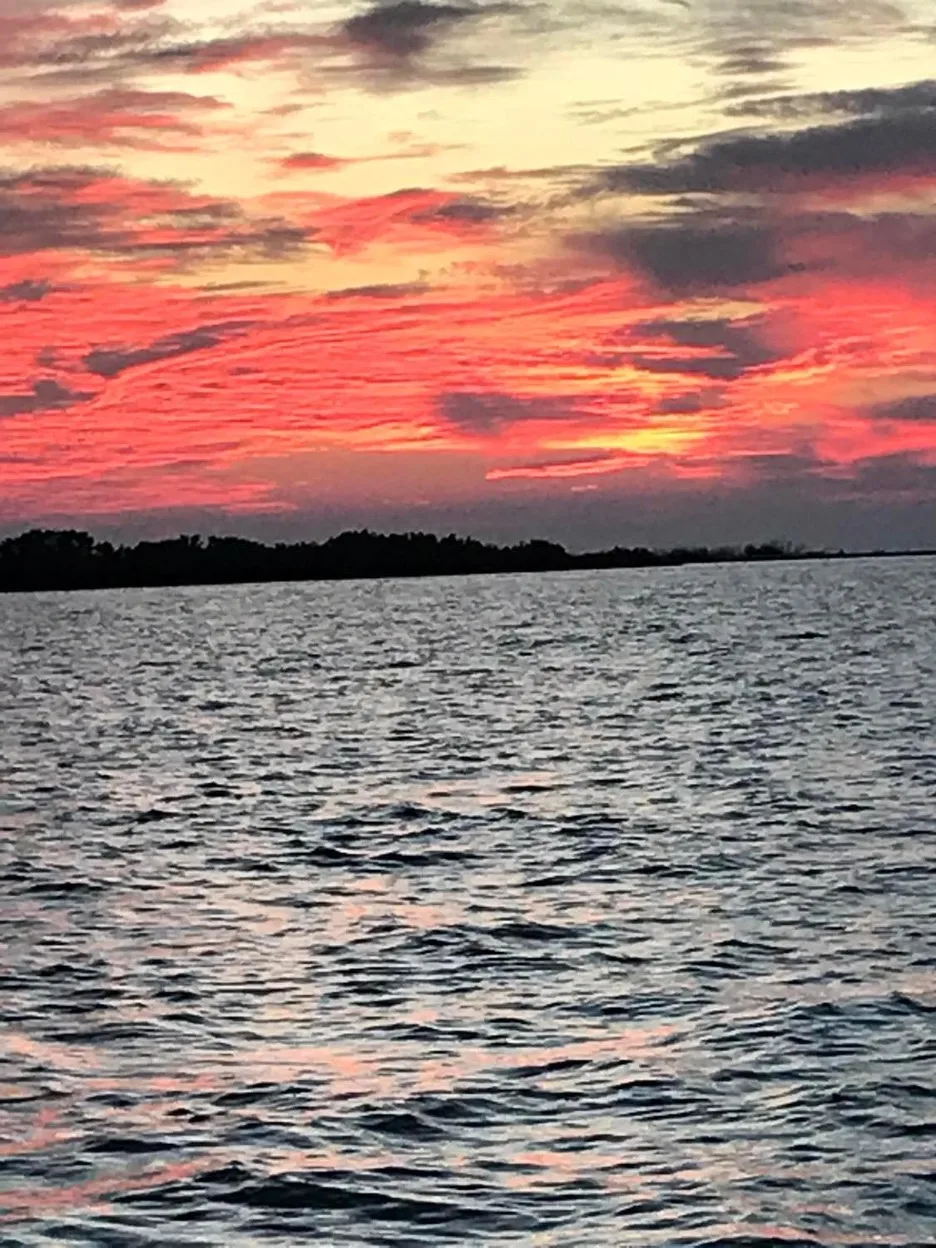
***
Final Thoughts Before you set sail on your Yacht
If you plan to use our guide to Sailing the Florida Keys, we would love to hear from you so leave us a comment below.
Want more great Florida sailing routes? be sure to check out the Best Places to go Sailing in Florida!
**
Author: Reilly Mulligan is a sailing enthusiast from Florida who has spent her life sailing and exploring the Sunshine State.
